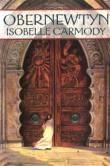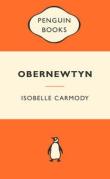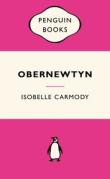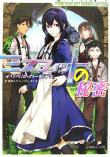AustLit
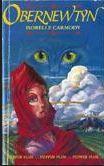 3369623363383220270.jpg
3369623363383220270.jpg
Latest Issues
AbstractHistoryArchive Description
'Elspeth is one of a new breed born into a world recovering from widespread destruction. The ruling council will tolerate no opposition. Elspeth must hide her telepathic powers in order to survive. In the mountain orphanage of Obernewtyn, Elspeth meets others with similar powers and together they confront the evil hidden there.' (Source: Trove)
Affiliation Notes
-
This work is affiliated with the AustLit subset Asian-Australian Children's Literature and Publishing because it has been translated into Japanese.
Publication Details of Only Known VersionEarliest 2 Known Versions of
Other Formats
- Also sound recording.
Works about this Work
-
The Perfect Place to Set a Novel about the End of the World? Trends in Australian Post-Nuclear Fiction for Young Adults
2015
single work
criticism
— Appears in: Bookbird , vol. 53 no. 2 2015; (p. 22-29) '"Australia has a fascinating yet contradictory nuclear history," writes Jeffrey Lantis, and this ambiguity can be seen in the post-nuclear young adult fiction produced in that country. British, American and German speculative fiction for young readers set after nuclear disaster tends to suggest reasons for the disaster, and by implication, to position readers towards acting to stop the disaster happening in the real world. By contrast, Australian writers of both fantasy and speculative fiction tend to be less concerned with the cause of the disaster than with how the nuclear apocalypse can be used to explore a range of cultural issues which may appear to have little or nothing to do with nuclear disaster. Working with the notion of apocalypse as both revelation and, more popularly, as a violent "end event" (Curtis), this paper explores why young adult post-nuclear fiction produced in Australia tends to be different from that produced in Britain, the USA and Germany, and demonstrates how the nuclear disaster is used in a selection of Australian young adult post-disaster fiction to address cultural issues, particularly those dealing with Australia's Indigenous population, and with the contemporary treatment of refugees.' (Publication summary) -
Post-Disaster Fiction for Young Adults : Some Trends and Variations
2010
single work
criticism
— Appears in: Papers : Explorations into Children's Literature , vol. 20 no. 1 2010; (p. 5-19) 'Taking as its central question: 'What narrative functions does the disaster in young adult postdisaster fiction have?', this paper explores how the genre is utilised to make comment on a range of issues, and argues that there are three connected sub-genres within young adult post-disaster fiction, with the disaster having a different function in each, and the nature of the comments made by each of these sub-genres tending also to be different.
Stephens considers that: 'The main distinguishing feature of the genre is that its texts are set in a fantasy future which exists some time after the world we know has been destroyed by a cataclysmic disaster, usually caused by human actions' (1992, p.126).
This paper broadens this definition to include texts in which the disaster actually happens but in which the focus is on life after the disaster. It understands fantasy to include speculative fiction which seeks to portray pre-disaster life as similar to the implied young adult reader's, as well as works of high fantasy in which the disaster has made Earth into a kind of secondary world (see Sands 1998, p.232), and focuses on novels in which the disaster has clearly been caused by humans in some way' (Authors abstract). -
y
 Elements of Carnival and the Carnivalesque in Contemporary Australian Children's Literature
Sydney
:
2009
27495428
2009
single work
thesis
Elements of Carnival and the Carnivalesque in Contemporary Australian Children's Literature
Sydney
:
2009
27495428
2009
single work
thesis
'This thesis discusses the influence of elements of Bakhtinian camivalesque in selected contemporary Australian children’s literature. Many of the Bakhtinian ideas are centred on the work of Franqois Rabelais, particularly his five books collectively entitled Gargantua and Pantagruel. Aspects of the complex field of Bakhtinian camivalesque that have been considered include: attitudes to authority, the grotesque body and its working, the importance of feasting and the associated concepts of bodily functioning, customs in relation to food, and ritual and specific language such as the use of curses and oaths. The role of humour and the manifest forms this takes within carnival are intrinsic and are discussed at some length. These central tenets are explored in two ways: first, in relation to their connection and use within the narrative structures of a selection of books short listed (and thus critically acclaimed) by the Australian Children’s Book Council from the early 1980s to the early 2000s, and second, by means of contrast, to the commercially popular but generally less critically acclaimed works of other Australian writers such as Paul Jennings and Andy Griffiths. The thesis concludes by considering the ways in which camivalesque freedom is encouraged through and by new media.'
Source: Abstract.
-
Isobelle Carmody : 'Myth Maker'
1997
single work
criticism
— Appears in: The Adolescent Novel : Australian Perspectives 1997; (p. 115-125) -
What is the Reality of Fantasy and Science Fiction?
1997
single work
criticism
— Appears in: Making It Real : Proceedings of the Fourth Children's Literature Conference 1997; (p. 40-54)
-
[Review] Obernewtyn
1988
single work
review
— Appears in: Magpies : Talking About Books for Children , July vol. 3 no. 3 1988; (p. 32)
— Review of Obernewtyn 1987 single work novel -
Nude Boy in Cover-Up
1988
single work
review
— Appears in: The Weekend Australian , 2-3 April 1988;
— Review of Where the Forest Meets the Sea 1987 single work picture book ; So Much to Tell You 1987 single work novel ; Pheasant and Kingfisher 1987 single work picture book ; The Long Red Scarf 1987 single work picture book ; The Landing : A Night of Birds 1987 single work children's fiction ; Deezle Boy 1987 single work novel ; My Place : The Story of Australia from Now to Then 1987 single work picture book ; Digging to China 1988 single work picture book ; Obernewtyn 1987 single work novel ; A Paddock of Poems 1987 selected work poetry ; Looking Out For Sampson 1987 single work children's fiction ; The Makers 1987 single work novel ; Birk, the Berserker 1987 single work children's fiction ; Tucking Mummy In 1987 single work picture book -
[Review] Obernewtyn
1988
single work
review
— Appears in: Reading Time : The Journal of the Children's Book Council of Australia , vol. 32 no. 2 1988; (p. 46)
— Review of Obernewtyn 1987 single work novel -
Know the Author : Isobelle Carmody
1994
single work
column
— Appears in: Magpies : Talking About Books for Children , July vol. 9 no. 3 1994; (p. 18-21) -
The Medieval and the Fantastic
1995
single work
essay
— Appears in: Magpies : Talking About Books for Children , September vol. 10 no. 4 1995; (p. 8-9) Masson discusses the popularity of fantasy, and examines how authors often chose a Celtic or medieval Europe style setting for their works. -
Isobelle Carmody : An Interview
Steven Paulsen
(interviewer),
1995
single work
interview
— Appears in: Sirius , March no. 8 1995; (p. 11-16) -
Post-Disaster Fiction for Young Adults : Some Trends and Variations
2010
single work
criticism
— Appears in: Papers : Explorations into Children's Literature , vol. 20 no. 1 2010; (p. 5-19) 'Taking as its central question: 'What narrative functions does the disaster in young adult postdisaster fiction have?', this paper explores how the genre is utilised to make comment on a range of issues, and argues that there are three connected sub-genres within young adult post-disaster fiction, with the disaster having a different function in each, and the nature of the comments made by each of these sub-genres tending also to be different.
Stephens considers that: 'The main distinguishing feature of the genre is that its texts are set in a fantasy future which exists some time after the world we know has been destroyed by a cataclysmic disaster, usually caused by human actions' (1992, p.126).
This paper broadens this definition to include texts in which the disaster actually happens but in which the focus is on life after the disaster. It understands fantasy to include speculative fiction which seeks to portray pre-disaster life as similar to the implied young adult reader's, as well as works of high fantasy in which the disaster has made Earth into a kind of secondary world (see Sands 1998, p.232), and focuses on novels in which the disaster has clearly been caused by humans in some way' (Authors abstract). -
A Dream That Calls
Kate Veitch
(interviewer),
1995
single work
interview
— Appears in: Australian Book Review , April no. 169 1995; (p. 65-67)




